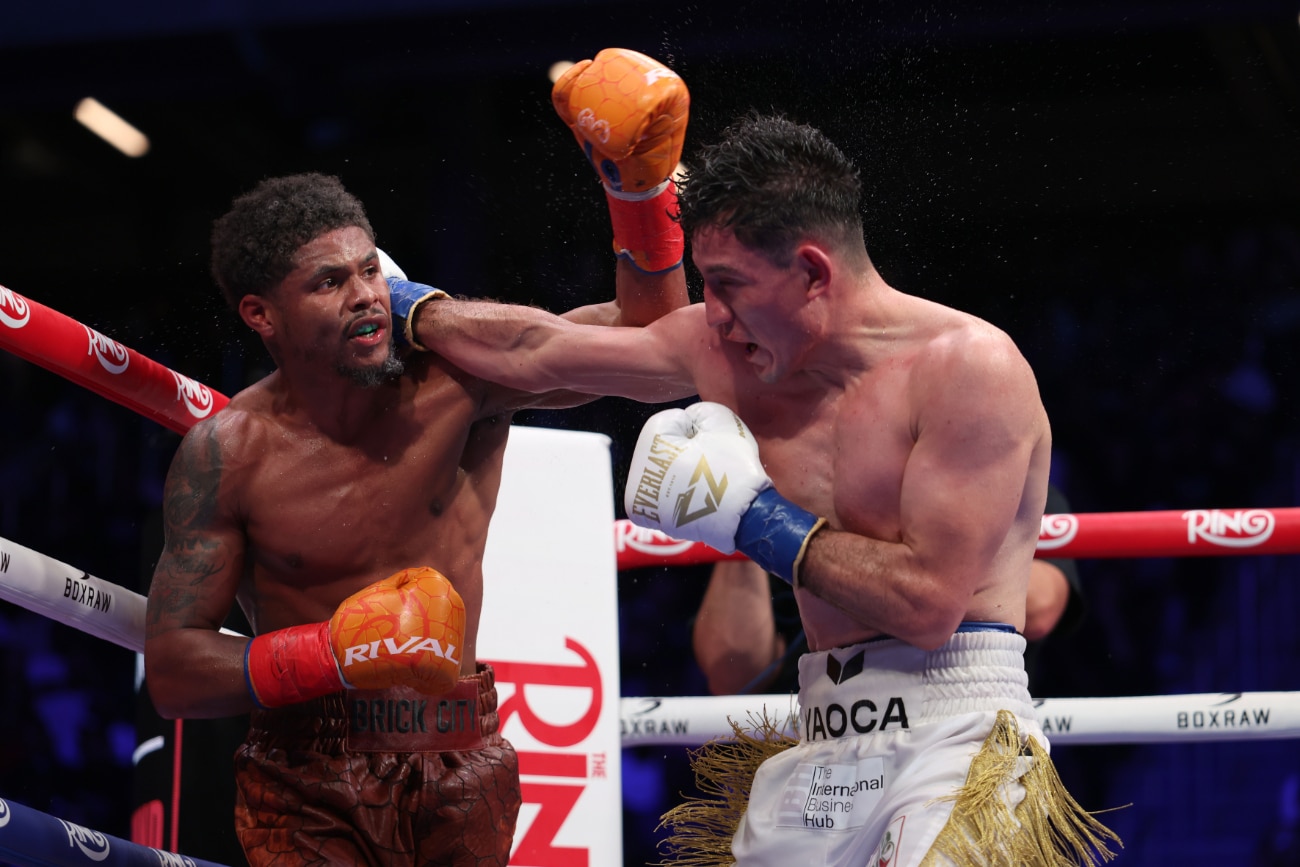PROTECT YOUR DNA WITH QUANTUM TECHNOLOGY
Orgo-Life the new way to the future Advertising by Adpathway Kevin Jairaj-Imagn Images
Kevin Jairaj-Imagn ImagesWith the NL playoff bracket basically settled (a statement I could live to regret if the Mets keep losing), I’ve started to think about how the various participants match up against each other. Not only did five of these six teams make the playoffs last year, all of those five have made it to October at least three times in the past four postseasons. The Cubs — a recidivist NLCS participant in the mid-2010s who last made the postseason in 2020 — are the closest thing we have to new blood.
Absent some shocking reversal of fortune in the next two weeks, we’re in for an October of sequels. But while there’s often at least one standout team in the bracket — usually the Dodgers, but not always — this year the top six teams in the NL seem fairly evenly matched. At least, every team has flaws.
The most interesting team, at least to me, is the presumptive no. 1 seed: the Milwaukee Brewers. As much of a postseason fixture as the Brewers have become, and as many early-round thrills as they’ve delivered, they’ve only bothered the NLCS once in the past decade, out of six trips to the playoffs.
This year’s Brewers, like most editions of this club, have been aggressive and resourceful and buckets of fun. Having traded away a cavalcade of important pitchers over the past few years, they’ve pulled replacements from the very living Earth, or so it seems. They’ve beaten the brakes off of the NL Central, and produced two discrete double-digit winning streaks in a six-week span. Quibble with how they look on paper, if you must, but their accomplishments this year are the best in baseball.
And yet!
While reserving moral judgment on the legality of sports betting in general, I will say that sportsbook odds can sometimes be illuminating. Vegas oddsmakers are not only trying to predict what will happen, they’re trying to predict what the public thinks will happen, in order to entice them to put money down.
So if you look at the NL pennant odds as an indicator of public sentiment, it’s interesting to note that the Brewers, who have a 98.2% chance to earn a bye by our playoff odds and a comfortable lead for home-field advantage throughout the playoffs, are only the third-favorite club for the NL pennant.
Is that just coastal elite arrogance, as bettors flock to the big names and high payrolls of the Dodgers and Phillies? Probably a little. But we’ve seen the limits of how far the Brewers can get on Midwestern pluck, thrift, and guile. And many of us have been burned before.
Or at least I have. The last time I had any confidence in my World Series pick was 2021, when I was dazzled — as in stupefied, it turns out — by the Brewers’ pitching staff and picked them to win the hunk of metal. In my defense, the pitching was as advertised, but Milwaukee’s offense managed just six runs in a four-game NLCS (including two shutouts) against eventual champion Atlanta.
It’s the kind of thing that makes you not trust a team. The Brewers have won two games, total, in their past five postseason appearances. Every season is a clean slate, and as much as we shouldn’t hold the 2025 Brewers accountable for sins committed by previous rosters, I think it’s fair to be skeptical of their ability to put together a playoff run (i.e. win a round) until they prove they can do it.
Do the Brewers owe their record to beating up on bad teams? To an extent. Certainly, they have beaten up on bad teams: 44-22 against sub-.500 opposition, the best record in baseball. The mere fact that they’ve played 66 games against losing teams helps; the Yankees have only played 47.
But the Brewers have beaten up on everyone. Their record against teams with winning records is 45-36, which trails only the Phillies, and only by a few percentage points. They’ve won the season series against eight of the 11 other teams currently in playoff position, with three games against the Padres still outstanding. They swept the season series against the Dodgers.
These are, ultimately, banalities. Forced to articulate a specific mechanism that I worry might let Milwaukee down in October, I would say the following: The Brewers are, for my money, the best team in the majors at the fundamentals. Especially their position players.
Milwaukee is sixth in the league in defensive value and first in baserunning value. They have the lowest chase rate of any position player group in the majors. Their lineup has only one player (Joey Ortiz) whom I’d describe as anything approaching an easy out; the Brewers have 10 players with a .720 OPS or better in 100 or more plate appearances this year, the most in baseball. (The Phillies, by comparison, have only six. The Dodgers and Padres have seven apiece.)
But four of the five other teams currently occupying an NL playoff position have at least two qualified hitters with a better wRC+ than the Brewers’ leader in that category, Christian Yelich.
The Brewers put pressure on opposing teams. They punish others’ mistakes while making few of their own. They will make you beat them. That’s huge. It’s how you put up the best record in baseball over the course of a season.
I have no doubt that this will continue in the playoffs. I am reasonably confident that the Brewers will not suffer the kind of embarrassing team-wide collapse that hit the Phillies in the first round last year or the Dodgers in 2023.
The big question is whether the Brewers’ opponent — whoever that is — will make enough mistakes for Milwaukee to keep this run going deep into October.
I started thinking about this while writing about Jakob Marsee, the Miami Marlins rookie who came up to the majors and beat the almighty hell out of average and bad pitching in the first three weeks of his career. Still is, in fact; as I write, Marsee’s career wRC+ is 162.
At the time, I wrote that Marsee could have a long career ahead of him as the contraction of the minor leagues and draft, along with ever-present injuries, water down the lower middle class of big league pitching. And I mentioned Isaac Collins as another player who could profit under similar circumstances.
The thing is, how many bad pitchers are you going to see in the playoffs?
Without adjusting for quality of pitcher or sequencing or quality of stuff, there are two spots where pitchers generally don’t want to throw the ball. The first is dead-center of the strike zone, where the league as a whole is hitting .329/.326/.601 this season. Baseball Savant, which is ordinarily not a fountain of hyperbolic nomenclature, calls these pitches “Meatballs.”
The other bad place is way outside the zone; “Waste” pitches, in the same site’s terminology. These pitches miss the zone by at least 12 inches vertically and/or 13.3 inches horizontally, and therefore have almost no chance of being hit or even generating a swing. Batters have a .671 OBP on pitches in the waste zone this season. The Brewers are ninth overall in team wOBA, but they’re third in wOBA against waste pitches and sixth (and three points out of fourth) in wOBA against meatballs.
During the regular season, hitters face a cornucopia of pitchers, effective and otherwise. In the postseason, not only do we lose the bottom 60% of the league, those good teams try to devote as much of their meaningful innings as possible to their top handful of arms. It would stand to reason that hitters who wait to punish mistakes would have to wait longer against better pitchers.
Let’s see if that’s true. In combining these two accursed pitch locations, meatball and waste, we invite a portmanteau to describe the whole set. That’s right, MeatWaste%. Sounds gross. I like it.
MeatWaste%
| 2021 | 7.4 | 8.9 | 16.3 | 7.3 | 9.8 | 17.1 |
| 2022 | 7.3 | 8.5 | 15.8 | 7.0 | 9.5 | 16.5 |
| 2023 | 7.4 | 8.6 | 16.0 | 7.0 | 8.3 | 15.3 |
| 2024 | 7.5 | 8.4 | 15.9 | 6.8 | 9.6 | 16.4 |
| 2025 | 7.8 | 7.8 | 15.6 | n/a | n/a | n/a |
Source: Baseball Savant
In general, the playoffs see about the same percentage of MeatWaste pitches as the regular season. But postseason baseball isn’t all Garrett Crochet carving up opposing lineups like corned beef in a deli slicer. You also get no. 7 relievers just trying to stay above water for an inning, or Brent Honeywell wearing it in a World Series blowout. Hitting mistakes in those situations is important, but it’s not where you get the most bang for your buck, leverage-wise. Do pitchers locate better when the game is close?
Postseason MeatWaste% by Game State
| 2021 | 5.6 | 7.6 | 13.2 | 4.8 | 6.4 | 11.2 | 3.3 | 4.9 | 8.2 |
| 2022 | 5.5 | 8.0 | 13.5 | 4.7 | 7.2 | 11.9 | 3.6 | 5.4 | 9.0 |
| 2023 | 4.9 | 6.2 | 11.1 | 4.5 | 5.0 | 9.5 | 2.6 | 3.2 | 5.8 |
| 2024 | 5.6 | 8.0 | 13.6 | 3.9 | 6.4 | 10.3 | 3.4 | 4.9 | 8.3 |
Source: Baseball Savant
You bet they do. If a playoff game is tied or has a margin of one run, there’s only single-digit MeatWaste.
So, yeah, there are fewer mistakes in the postseason. If you wait for a pitcher to beat himself, you might wait so long you end up on the golf course.
I’m sure everyone is shocked and invigorated by this revelation, that the pitching gets tougher in high-leverage playoff situations, but at least I got to make up a new stat with an off-putting name. Go Brewers.


 4 hours ago
2
4 hours ago
2





![[Ken Rosenthal] Orioles plan to expand front office, hire new GM under Mike Elias](https://external-preview.redd.it/lTscUWqv6pSL07ZgFxrPiXSGr1llluj7AT6bYpf14Ds.jpeg?width=640&crop=smart&auto=webp&s=e94af029d2736fd2aacd8a126ec2a0c2364388c3)











 English (US) ·
English (US) ·  French (CA) ·
French (CA) ·